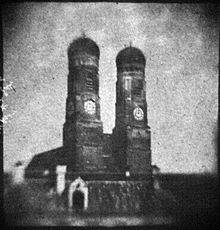Wolfgang Franz von Kobell
- View a machine-translated version of the German article.
- Machine translation, like DeepL or Google Translate, is a useful starting point for translations, but translators must revise errors as necessary and confirm that the translation is accurate, rather than simply copy-pasting machine-translated text into the English Wikipedia.
- Consider adding a topic to this template: there are already 9,155 articles in the main category, and specifying
|topic=will aid in categorization. - Do not translate text that appears unreliable or low-quality. If possible, verify the text with references provided in the foreign-language article.
- You must provide copyright attribution in the edit summary accompanying your translation by providing an interlanguage link to the source of your translation. A model attribution edit summary is
Content in this edit is translated from the existing German Wikipedia article at [[:de:Franz von Kobell]]; see its history for attribution. - You may also add the template
{{Translated|de|Franz von Kobell}}to the talk page. - For more guidance, see Wikipedia:Translation.

Wolfgang Xavier Franz Ritter von Kobell (19 July 1803 – 11 November 1882) was a German mineralogist and writer of short stories and poems in Bavarian dialect.[1]
Biography

Kobell was born in Munich, Bavaria (where he also died), son of the painter Wilhelm Kobell. After studying mineralogy in Landshut, he became professor of mineralogy in 1826 at the University of Munich,[2] and in 1856 was appointed first curator of the Bavarian State collection of minerals. His greatest contributions were new methods in crystallography. In 1855 he invented the stauroscope for the study of the optical properties of crystals.[3] The mineral kobellite is named after him,[4] and he invented a comparative fusibility scale.
Besides his work as a mineralogist, Kobell is also famous for writing many short stories and poems in the Bavarian dialect of Upper Bavaria. He was among the regular hunting companions of the Bavarian dukes and monarchs. His best known work is a short story which was later used as base for the popular Bavarian stage play Der Brandner Kasper. The story is about a blacksmith from Tegernsee, who is visited by the grim reaper and tricks him into drinking and gambling for some further years on earth. The grim reaper has some issues with his management and convinces Kasper to stay in paradise, after he had a look into it, similar as in the Joshua ben Levi legend. The play was adapted 1974 for the stage by a grand nephew of Kobell, Kurt Wilhelm.[5] There are different television and movie adaptations. Each year before All Saint's Day it is being sent by the Bayerischer Rundfunk (Bavarian Broadcasting Agency).
Kobell's writing shows great comic awareness and the ability to combine a rich sense of fantasy with realism. 1834 Kobell went for a study journey to Greece during the short term kingdom of King Otto of Greece and was member of different academies. He pioneered as well early photographic and photochemistry procedures together with Carl August von Steinheil.[6]

Works
Scientific
- Charakteristik der Mineralien (2 vols. 1830–1831)
- Tafeln zur Bestimmung der Mineralien (1833, and later editions; 12th ed. by Konrad Oebbeke, 1884; 13th ed. 1893)
- Grundzüge der Mineralogie (1838)
- Galvanographie (1842; 2d ed. 1846), describing a method of his own invention
- Skizzen aus dem Steinreich (1850)
- Die Mineralogie (1858) Digital edition by the University and State Library Düsseldorf
- Mineralogie: Populäre Vorträge (1862)
- Geschichte der Mineralogie von 1650–1860 (1864)
He was also the author of numerous scientific papers, and described many new minerals.
Works in dialect
- Schnadahüpfln und Sprüchln (2d ed. 1852)
- Gedichte in pfälzischer Mundart (1839–41)
- Jagd- und Weinlieder (1889)
See also
Notes
- ^ Ritter is a title corresponding to a knighthood (sometimes mistranslated as "Baron"), not a first or middle name.
- ^ KOBELL, Franz Wolfgang Ritter von. (1803–1882) Tafeln zur Bestimmung der Mineralien – The Mineralogical Record
- ^ Manual of petrographic methods by Albert Johannsen
- ^ Kobellite Mindat.org
- ^ Franz von Kobell / Kurt Wilhelm Münchner Volkstheater
- ^ A Concise History of Photography by Helmut Gernsheim
References
- Chisholm, Hugh, ed. (1911). "Kobell, Wolfgang Xaver Franz, Baron von" . Encyclopædia Britannica. Vol. 15 (11th ed.). Cambridge University Press. p. 884.
Attribution:
- This article incorporates text from a publication now in the public domain: Gilman, D. C.; Peck, H. T.; Colby, F. M., eds. (1905). "Kobell, Franz von" . New International Encyclopedia (1st ed.). New York: Dodd, Mead.
Further reading

- Luise von Kobell, Franz von Kobell (Munich, 1884).
- O. Krätz (October 1978). "Das Portrait: Franz Ritter von Kobell (1803–1882)". Chemie in unserer Zeit. 12 (5). Wiley: 153–160. doi:10.1002/ciuz.19780120504. (subscription required)










